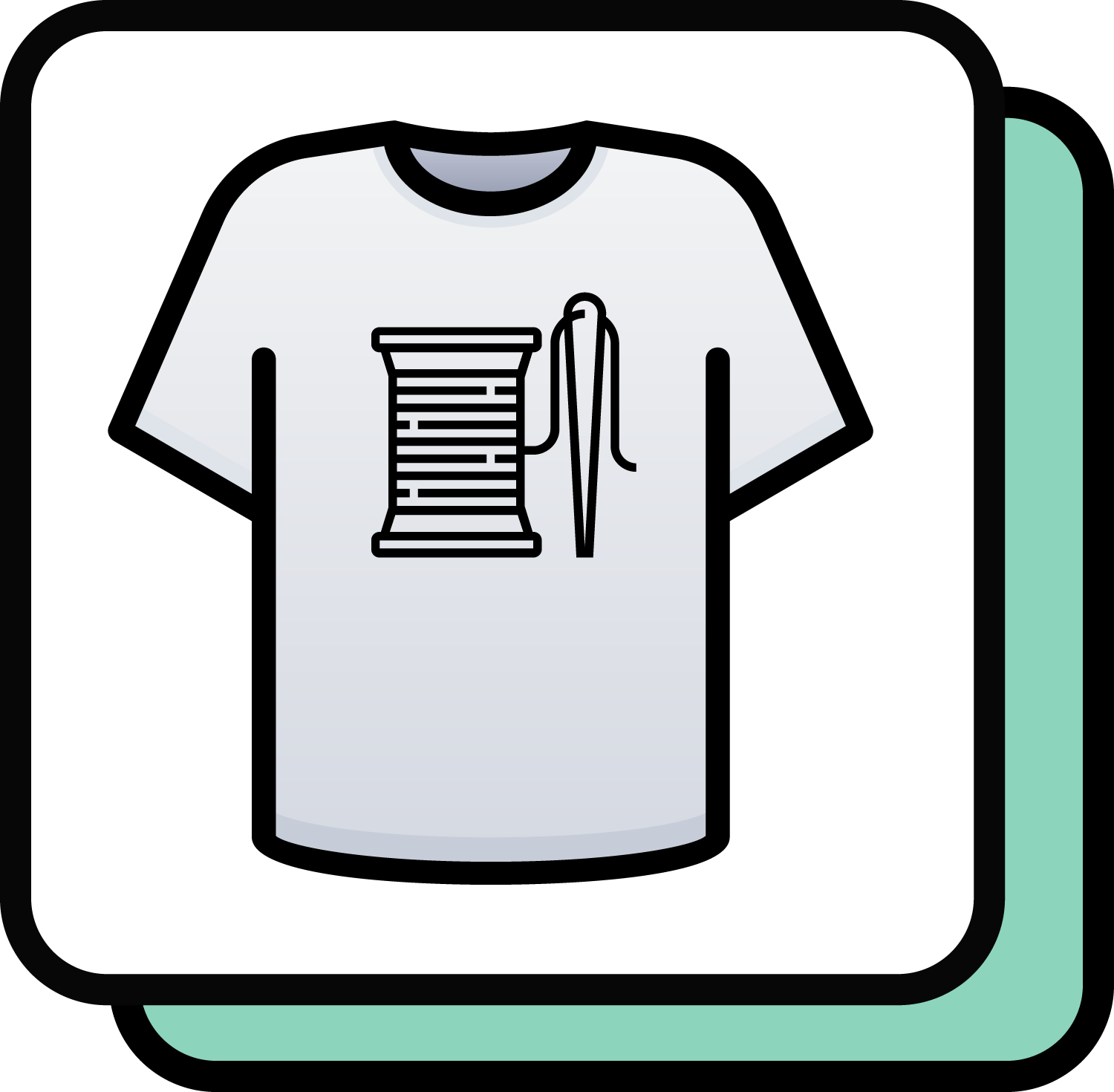EMBROIDERY

Application
Since the most important influence on the embroidery time is the area to be covered, the number of stitches, so in terms of price, it is most profitable to embroider smaller or medium designs.
Embroidery is usually applied when embroidering large quantities, but small logos.
This method is chosen by companies for employee clothing due to its durability and solid appearance.
Advantages:
- The most durable way to transfer a logo onto a garment.
- Can be embroidered on most materials.
- After the embroidery file is ready and tested, the next time you can embroider faster.
Disadvantages:
- Preparation and testing of the embroidery file is required.
- It can be expensive to embroider large area and fill designs.
- Transitions between colors are not possible, so colored mottled designs cannot be transferred.
- You have to choose specific colors for individual details.
- Due to the preparation and embroidery process, one of the longer methods.
- It can be difficult to embroider on thin materials. There is a risk of tearing or shrinking the garment.
- It is difficult to extract fine lines or fine details.
- Depending on the strength of the material, the embroidery result may also differ.

File requirements
A quality vector file is required for production. Available formats: PDF, AI, EPS, SVG, CDR
Pantone CMYK color mode is required.
Texts must be skewed. Otherwise, the text displayed to the customer and the manufacturer may differ.
A file of specific dimensions is being prepared. In order to change the size, file conversion and testing is required.
Production process
The speed of embroidery is mainly influenced by the filling and, accordingly, the number of stitches. The more stitches are embroidered, the longer the embroidery takes and the more expensive it is for the customer. In order to achieve quality and reduce risks, the embroidery speed is kept constant.
-
The embroidery file is being prepared. Stitches, filling, directions and the bottom layer are set.
-
The file is tested and changes are made if necessary. Repeated testing.
-
After getting the right file and choosing the thread colors, you can start embroidering.
-
The embroidery position is selected and marked.
-
A special material is placed on the bottom of the garment - fleece. This gives stability to the embroidery area.
-
In the place of embroidery, the hoop is pressed and transferred to the embroidery machine.
-
Embroidered logo and removable bow. Excess fleece is removed.
-
The embroidered garment has press marks from the hoop, so it is steamed and ready for delivery.
-
Excess threads are removed.
The prices of prints and clothes are negotiated individually. We will advise you, help you choose clothes that meet your needs in a short time and choose the most optimal printing method.
You can inquire about prices and deadlines:
+37063077733 arba [email protected]
.jpg)
.jpg)
.jpg)

_1.jpg)
.jpg)
